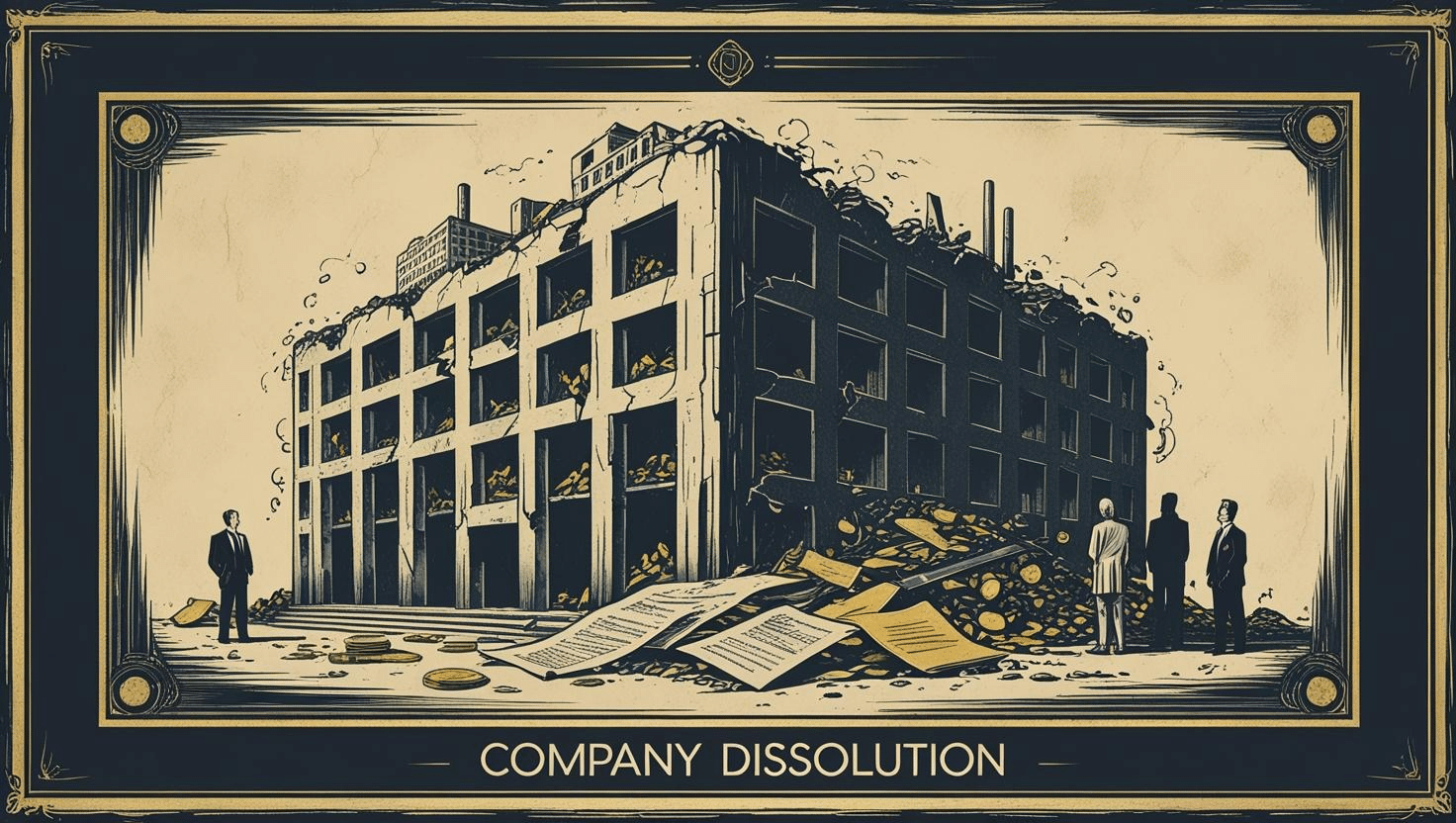Introduction
When a company is dissolved, it signifies the formal closure and termination of its existence. This process involves various legal, financial, and administrative steps that need to be followed to ensure the proper winding up of the company’s affairs. Understanding the implications of company dissolution is crucial for business owners, shareholders, creditors, and other stakeholders involved. In this comprehensive guide, we will delve into the intricacies of what it means when a company is dissolved and the key aspects to consider.
Legal Definition of Company Dissolution
Company dissolution refers to the legal process of officially ending the existence of a company. This can occur voluntarily through a decision by the company’s shareholders or involuntarily due to regulatory non-compliance, insolvency, or other external factors. The process of dissolution typically involves filing the necessary paperwork with the relevant authorities, settling outstanding debts, and distributing any remaining assets to shareholders.
Key Steps in Company Dissolution
Company dissolution involves several key steps that must be followed to ensure a smooth and legally compliant closure:
- Hold a board meeting to propose dissolution: The process typically begins with a board meeting where the decision to dissolve the company is proposed.
- Obtain shareholder approval for dissolution: Shareholders must vote on the decision to dissolve the company, usually requiring a majority vote.
- File dissolution paperwork with the appropriate government agencies: Legal paperwork must be filed with the relevant authorities to formally dissolve the company.
- Settle outstanding debts and obligations: All outstanding debts and liabilities of the company must be resolved before the dissolution is finalized.
- Distribute remaining assets to shareholders: Once debts are settled, any remaining assets are distributed among the shareholders.
Implications of Company Dissolution
When a company is dissolved, several implications arise for its stakeholders:
- Legal Consequences: Company dissolution results in the termination of the company’s legal existence, which means it can no longer engage in business activities or enter contracts.
- Financial Obligations: All outstanding debts and liabilities of the company must be settled during the dissolution process to ensure creditors are paid.
- Employee Impact: Employees may face job loss or changes in employment status as a result of the company’s dissolution.
- Shareholder Rights: Shareholders may be entitled to receive a portion of the company’s remaining assets after debts are settled, based on their ownership stake.
Voluntary vs. Involuntary Dissolution
Companies can be dissolved voluntarily by a decision of the shareholders or involuntarily due to external factors:
- Voluntary Dissolution: Occurs when shareholders vote to wind up the company’s affairs and dissolve it voluntarily, often due to strategic reasons or business considerations.
- Involuntary Dissolution: Can result from non-compliance with regulatory requirements, insolvency, or court-ordered dissolution, typically due to legal or financial issues.
Steps to Dissolve a Company
When initiating the dissolution process, certain steps need to be followed to ensure a smooth and legally compliant closure:
- Conduct a board meeting to propose dissolution: The board of directors must formally propose the dissolution of the company.
- Obtain shareholder approval for dissolution: Shareholders must vote on the decision to dissolve the company, following the procedures outlined in the company’s bylaws.
- File dissolution paperwork with the relevant authorities: Legal documents must be filed with the appropriate government agencies to officially dissolve the company.
- Settle outstanding debts and obligations: All debts and liabilities must be settled, including paying off creditors and fulfilling contractual obligations.
- Distribute remaining assets to shareholders: Any remaining assets, after debts are settled, are distributed among the shareholders based on their ownership interests.
Common Mistakes to Avoid
During the company dissolution process, it is essential to avoid common mistakes that can lead to legal issues or delays:
- Failure to settle outstanding debts before distribution of assets: Failing to prioritize debt settlement can result in legal challenges from creditors.
- Incorrect filing of dissolution paperwork: Proper documentation is crucial to ensure the dissolution is legally valid and recognized.
- Non-compliance with regulatory requirements: Adhering to all legal and regulatory obligations is essential to avoid penalties or legal consequences.
- Not notifying creditors and other stakeholders of the dissolution: Communication with creditors and other stakeholders is vital to ensure transparency and compliance throughout the dissolution process.
Conclusion
Company dissolution is a significant decision that requires careful consideration and adherence to legal requirements. Understanding the implications, key steps, and potential challenges of company dissolution is essential for all stakeholders involved. By following the necessary procedures, seeking professional guidance, and avoiding common mistakes, companies can navigate the dissolution process effectively and protect the interests of their shareholders, creditors, and employees.

